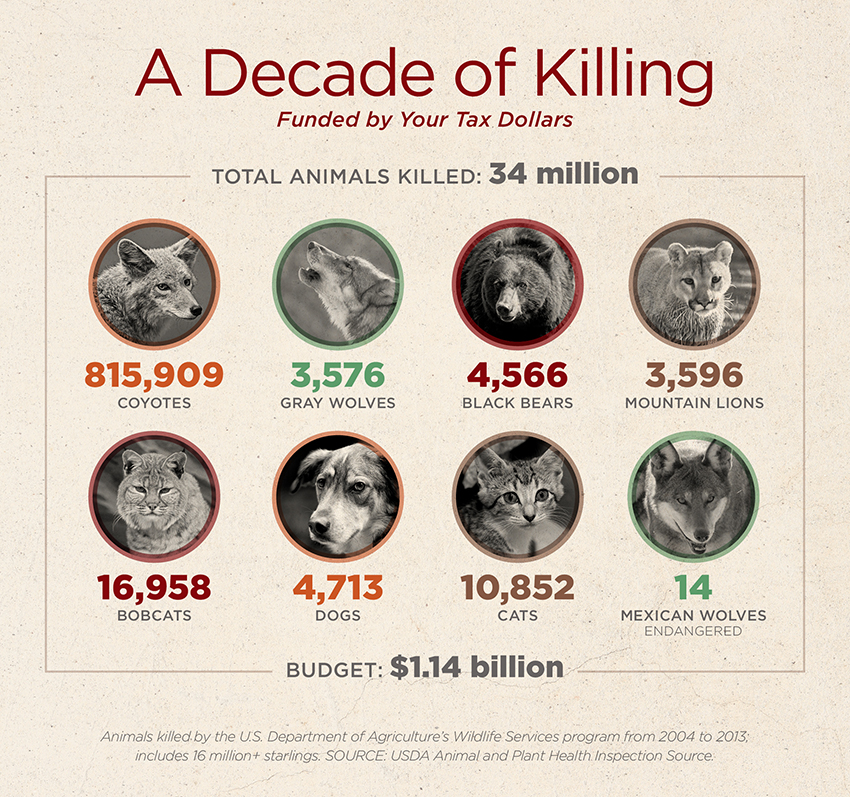Wildlife Services (WS) is a program within the Department of Agriculture that addresses human-wildlife conflicts, primarily by killing wildlife. Much of this activity occurs on public lands in the west, ostensibly to protect livestock from predation. Millions of animals are eradicated each year by poisons, traps, snares, gas, and aerial gunning. Because of its controversial mission, the program is notoriously secretive. However, abuses have been exposed in recent years, leading to calls for change.
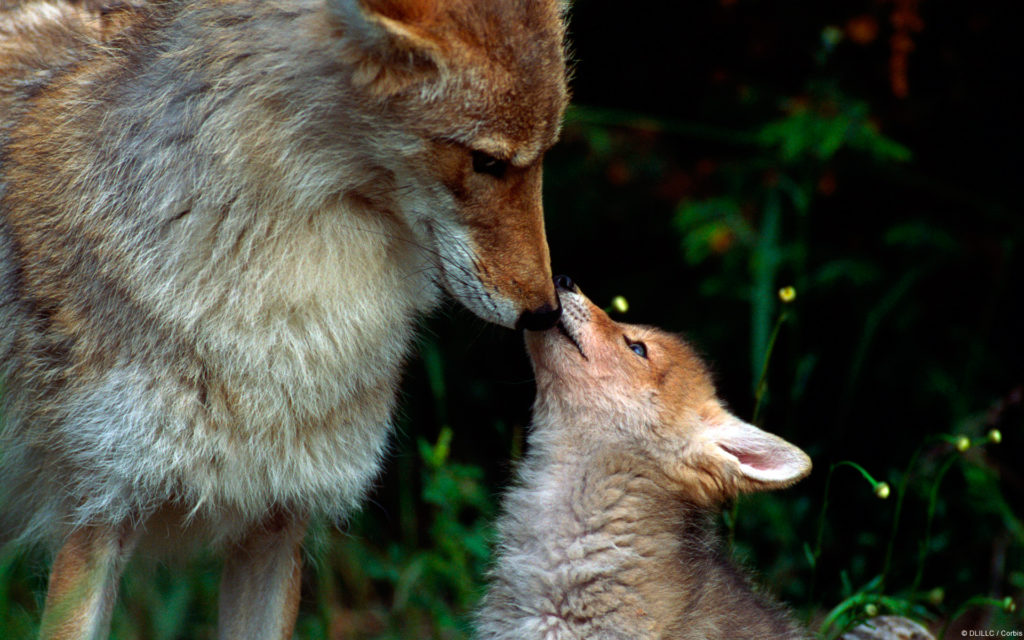
Reforms are needed because:
* Most people do not support lethal controls. Cultural standards for animal treatment are changing. Cruel and inhumane techniques and indiscriminate mass killing programs are no longer acceptable to most Americans. WS persists mainly due to secrecy; most people don’t know it exists and would want to defund it if they did. The program needs to adapt to current scientific views of wildlife management.
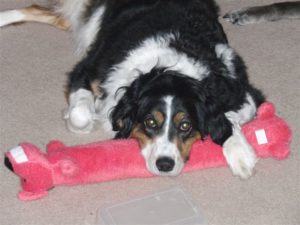
* Lethal control methods are hazardous to humans and pets. Many dogs and cats are killed annually by traps or poison. Because it wants to avoid public interference, WS doesn’t always warn pet owners when it is conducting lethal control operations nearby. Traps and poisons may be placed along hiking trails on public land, where they pose risks to public safety.
* Lethal control is not based on sound science. There is little evidence that killing predators to reduce livestock conflicts works long-term, and some studies suggest indiscriminate killing may actually increase conflicts. The program also fails to adequately weigh the effects of predator control on ecosystem services. And lethal methods kill non-target animals, including rare species such as eagles and wolverines. These unintended deaths are an unacceptable consequence of using arbitrary lethal control methods.
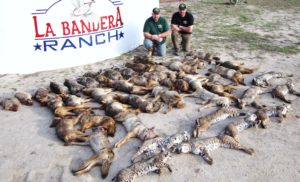
* WS lacks transparency and trustworthiness. Requests for information are routinely stonewalled. There are reports of inhumane and illegal misconduct by employees, behavior that is allowed or even encouraged when there is no public oversight.
Proposed reforms:
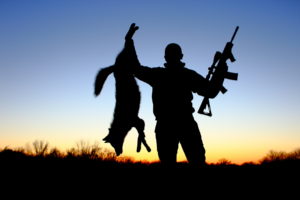 * End inhumane killing techniques. Target problem animals individually rather than destroying as many animals as possible in the control area. Require animal welfare concerns, conservation impacts, and sound science to be fully considered in decision making. Also, hold WS to higher standards of accountability and transparency. The public deserves accurate records of the number of animals killed, including non-target wildlife and pets.
* End inhumane killing techniques. Target problem animals individually rather than destroying as many animals as possible in the control area. Require animal welfare concerns, conservation impacts, and sound science to be fully considered in decision making. Also, hold WS to higher standards of accountability and transparency. The public deserves accurate records of the number of animals killed, including non-target wildlife and pets.
* Incentivize proactive approaches to wildlife conflicts rather than reacting to problems with lethal solutions. When addressing conflicts, require that non-lethal control methods be implemented first. Lethal control should be a last resort. Fully fund development of new management methods such as domestic guard animals, increased human husbandry, birthing sheds, strobe lights, and fencing. Follow the examples in Montana, Oregon, Arizona, and Wisconsin where local Wildlife Service agents are helping livestock operators develop non-lethal management.
* Comply with NEPA. Overhaul the outdated programmatic EIS for WS, which hasn’t been revised in almost 20 years. Many aspects of the natural and social environment have changed since then, requiring an updated analysis of agency actions. WS should also conduct an EIS for each state in which it operates, and prepare EAs to analyze and disclose to the public the site-specific impacts of each of its projects.
* Transfer WS to the Department of the Interior to integrate it with other federal wildlife management programs where the corporate culture and guiding documents are more closely aligned with modern views of wildlife management, including conservation.
Here is a PDF of this webpage for your use.
Photos (all accessed 4/29/16):
1. “Coyote mother and pup”. Posted by Sadia Pak 5/6/13 https://www.funawake.com/animal-wallpapers-hd-widescreen-high-quality-desktop-free-download/coyote-mother-and-pup-2/
2. “Maggie_and_Baby.” No date. Posted by Oregon Public Broadcasting https://www.opb.org/news/blog/ecotrope/dogs-death-sparks-a-fight-over-wildlife-trapping/ [” The McCurtain family dog Maggie was killed in a wildlife trap that was set within 50 feet of the family’s back yard fence.”]
3. No title. 2009. Posted by wolfernation.com. https://wolfernation.com/free-videos/?tag=coyote [Texas Predator School, showing “the catches, and all the fun”].
4. “Joey-Coyote-1”. 2016. Posted by Mahoney Outdoors. https://www.mahoneyoutdoors.com/hunting/elite-hunter-effective-predator-control-part-2/

